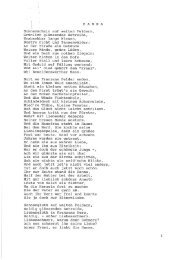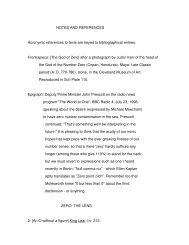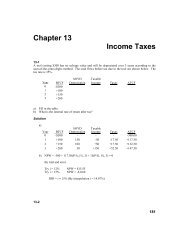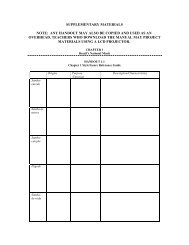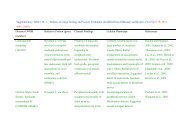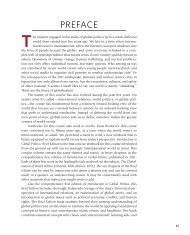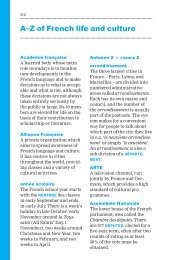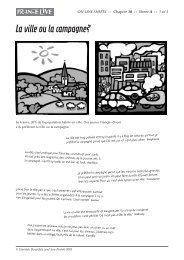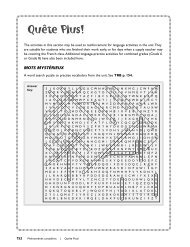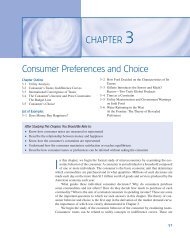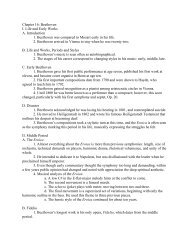Human Resource Management in Context
Human Resource Management in Context
Human Resource Management in Context
You also want an ePaper? Increase the reach of your titles
YUMPU automatically turns print PDFs into web optimized ePapers that Google loves.
Selection<br />
Performance<br />
Appraisal<br />
its philosophies and practices (Guest 1987). Proponents argued, and still argue, that, if the<br />
function demonstrated its ability to design, implement, and manage more sophisticated personnel<br />
techniques, it would result <strong>in</strong> heightened organizational performance. As a result of this,<br />
the function would establish a much-needed clarity and legitimacy of its practice and thereby<br />
secure substantial improvements <strong>in</strong> status for the people management role and also for the<br />
profession (Tyson and Fell 1986).<br />
The greater emphasis placed upon establish<strong>in</strong>g a fi t between employment policies and practices<br />
and the organization’s bus<strong>in</strong>ess objectives is one of the ma<strong>in</strong> ways by which HRM asserted<br />
its dist<strong>in</strong>ctive approach towards people management, with Fombrun, Tichy, and Devanna’s<br />
‘Michigan model of HRM’ (1984) propos<strong>in</strong>g that long-term competitive advantage lies <strong>in</strong> secur<strong>in</strong>g<br />
this alignment between corporate goals, HR strategy, and its people management activities.<br />
This is presented diagrammatically <strong>in</strong> Figure 1.1.<br />
1.5.1 Chang<strong>in</strong>g the status of the HR function<br />
Rewards<br />
Development<br />
Figure 1.1 The Michigan model of HRM. Source: Fombrun, Tichy, and Devanna (1984).<br />
The heightened importance awarded to eff ective people management places HRM at the heart of the<br />
organization’s bus<strong>in</strong>ess strategy, mak<strong>in</strong>g it highly attractive to practitioners as well as to l<strong>in</strong>e managers,<br />
whose role was also enhanced because of the active stance they are required to play <strong>in</strong> the implementation<br />
of HR policies. Another attractive feature is the assumption of an essentially harmonious<br />
relationship between employees and their managers where both parties are perceived as work<strong>in</strong>g<br />
towards the same goal of organizational success. This was <strong>in</strong> marked contrast to traditional people<br />
management approaches <strong>in</strong> the UK, where workplace confl icts between management and trade<br />
unions were seen as an <strong>in</strong>evitable and frequently occurr<strong>in</strong>g part of the employment relationship.<br />
In contrast to this, the Harvard model (Beer et al. 1984), illustrated <strong>in</strong> Figure 1.2, takes <strong>in</strong>to<br />
account a wider range of stakeholder <strong>in</strong>terests than the Fombrun approach, whilst also highlight<strong>in</strong>g<br />
the importance of people management and the role played by the function.<br />
This view of HRM recognizes that stakeholder <strong>in</strong>terests are more likely to be atta<strong>in</strong>ed if HR<br />
policy choices and outcomes ensure employee well-be<strong>in</strong>g. Its fl exibility with regard to stakeholder<br />
<strong>in</strong>terests made the model easier to export beyond the USA, s<strong>in</strong>ce it recognizes key areas<br />
of diff erence across national boundaries. It certa<strong>in</strong>ly proved to be the more popular approach<br />
<strong>in</strong> the UK, despite criticism from some academics for its preference for the unitarist view (a<br />
view on people management that emphasizes harmonious relationships between managers and<br />
employees and an acceptance of organizational objectives) over the pluralist view of the workplace,<br />
which sees confl ict as <strong>in</strong>evitable. But it should be noted that neither model pays much<br />
attention to the realities of work <strong>in</strong>side the organization or to the contested, contradictory, and<br />
fragmented nature of the employment relationship between employer and employee.<br />
Chapter 1<br />
Introduc<strong>in</strong>g human resource management 9



